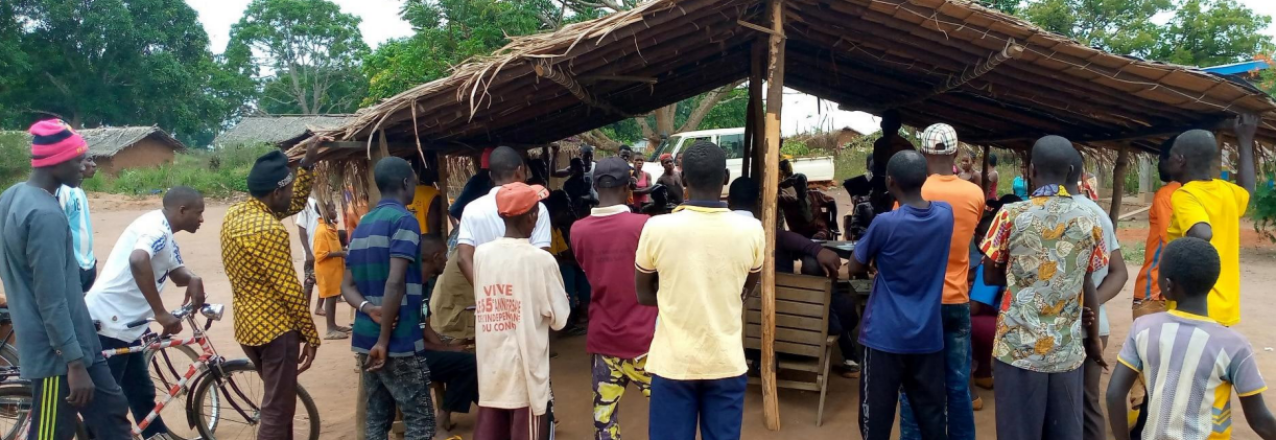Introduction and Background
The USAID’s Artisanal Mining and Property Rights (AMPR) project Y5 Q2 report for FY2023 in the Central African Republic
The Artisanal Mining and Property Rights (AMPR) project supports the United States Agency for International Development (USAID) to improve land and resource governance and strengthen property rights for all members of society, especially women. It serves as USAID’s vehicle for addressing complex land and resource issues around artisanal and small-scale mining (ASM) in the Central African Republic (CAR) using a multidisciplinary approach. The project focuses primarily on diamond — and to a lesser extent, gold — production as well as targeted technical assistance to other USAID Missions and Operating Units (OUs) in addressing land and resource governance issues within the ASM sector. AMPR builds upon activities and lessons from the Property Rights and Artisanal Diamond Development (PRADD I and II) projects. The AMPR contract was signed on September 28, 2018, for an initial base period of three years with two option years, which were granted last year. The present report summarizes progress during AMPR’s quarter 1 of the fifth year of project implementation.
Objective I of the project aims to strengthen CAR’s capacity to implement the Kimberley Process Certification Scheme (KPCS) requirements. To launch the initiative, the AMPR team conducted a gap analysis and identified recommendations to stem the tide of rapidly expanding rough diamond smuggling and to remove barriers to implementing the Kimberley Process (KP) Operational Framework (OF). AMPR supports miner education, awareness-raising, and implementing capacity-building measures such as logistical support for local KP Focal Points and the strengthening of local monitoring committees. AMPR is also designing the conceptual framework for piloting decentralized artisanal mining zones (Zones d’Exploitation Artisanale, ZEAs) with innovations for local revenue management while also examining lessons learned and opportunities for miner parcel certification.
Objective 2 strengthens social cohesion and economic development in diamond mining communities. AMPR is building upon lessons learned from PRADD II and expanding local structures and processes for fostering peace and reconciliation. AMPR supports the expansion of local peace and reconciliation committees (Comités Locaux de Paix et Réconciliation [CLPRs]), as well as their efforts to monitor and resolve conflicts and conduct peacebuilding activities. The project is continuing efforts to foster coordination between the government ministries responsible for mining and peacebuilding. Finally, AMPR supports livelihoods activities for women as part of a comprehensive Gender Action Plan to promote women’s economic and social inclusion.
Objective 3 focuses on understanding the artisanal gold supply chain. AMPR, in partnership with the International Peace Information Service (IPIS) and RESOLVE, implemented a baseline assessment of the gold supply chain and created an interactive online map of artisanal gold mining sites. AMPR organized a workshop to present results from the study and facilitate training and discussion aimed at moving toward a national gold action plan. In Y4, AMPR commissioned a study to generate recommendations for improving gold commercialization and export systems in CAR.
Objective 4 involves responding to USAID’s requests for technical assistance with respect to understanding the linkages between ASM and development issues. One recent example is AMPR’s evaluation of the PRADD II project in Côte d’Ivoire, which concluded in 2018.
The AMPR project is implementing activities in close coordination with other donors, especially the World Bank (WB) and the European Union (EU), who also have activities in the sector. The project will foster synergies and avoid duplication through local coordination and regular calls between donors.


